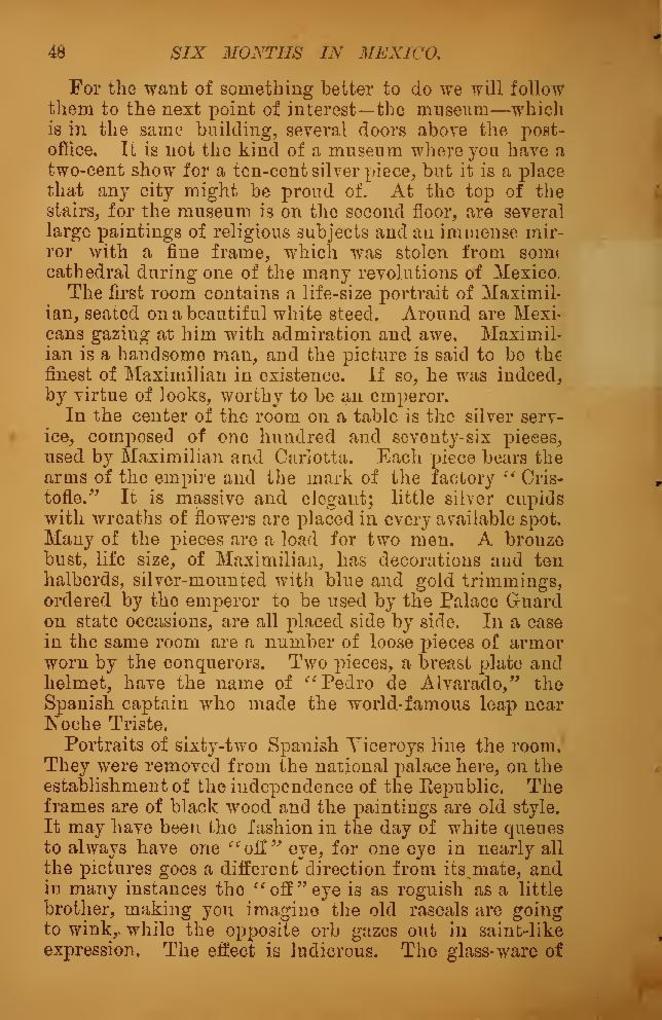For the want of something better to do we will follow to the next point of interest—the museum—which is in the same building, several doors above the post-office.
It is not the kind of a museum where you have a two-cent show for a ten-cent silver piece, but it is a place that any city might be proud of. At the top of the stairs, for the museum is on the second floor, are several large paintings of religious subjects and an immense mirror with a fine frame, which was stolen from some cathedral during one of the many revolutions of Mexico.
The first room contains a life-size portrait of Maximilian, seated on a beautiful white steed. Around are Mexicans gazing at him with admiration and awe. Maximilian is a handsome man, and the picture is said to be the finest of Maximilian in existence. If so, he was indeed, by virtue of looks, worthy to be an emperor.
In the center of the room on a table is the silver service, composed of one hundred and seventy-six pieces, used by Maximilian and Carlotta. Each piece bears the arms of the empire and the mark of the factory "Cristofle." It is massive and elegant; little silver cupids with wreaths of flowers are placed in every available spot. Many of the pieces are a load for two men. A bronze bust, life size, of Maximilian, has decorations and ten halberds, silver-mounted with blue and gold trimmings, ordered by the emperor to be used by the Palace Guard on state occasions, are all placed side by side. In a case in the same room are a number of loose pieces of armor worn by the conquerors. Two pieces, a breast plate and helmet, have the name of "Pedro de Alvarado," the Spanish captain who made the world-famous leap near Noche Triste.
Portraits of sixty-two Spanish Viceroys line the room. They were removed from the national palace here, on the establishment of the independence of the Republic. The frames are of black wood and the paintings are old style. It may have been the fashion in the day of white queues to always have one "off" eye, for one eye in nearly all the pictures goes a different direction from its mate, and in many instances the "off" eye is as roguish as a little brother, making you imagine the old rascals are going to wink, while the opposite orb gazes out in saint-like expression. The effect is ludicrous. The glass-ware of
